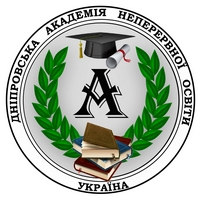REGULATORY MECHANISMS FOR THE DEVELOPMENT OF NURSING: INTERNATIONAL CONTEXT
Abstract
The article addresses the problem of the development of nursing in the international context. Based on the analysis of regulatory documents of the World Health Organization, the WHO European Regional Office, the World Council of Nurses, information materials, resolutions of the World Health Assembly & other subjects of international policy, world trends that influence the development of the health system, determine the regulatory regulation of health workers at different levels of management have been identified.
The international context of the world trends for the nursing professional development is disclosed: patient-oriented and family-centered approaches to the professional activity of a nurse, a competent approach to the continuous professional development of a person during his career, which includes continuous medical education, continuous professional education and training of medical workers at a medical institution; legal regulation of nurses’ activities for the provision of high-quality comprehensive medical services; strengthening the role of junior medical staff as an important component of human resources to improve public health; expanding the functions of junior medical staff and engaging them actively in health care management, interprofessional cooperation and joint practices; personalization, leadership development; introduction of competent models for health professionals aiming at continuing education and training.
It is concluded that the defined global strategic guidelines and directions of action should be considered in the context of reforming the healthcare sector in Ukraine as imperatives of forming the latest state policy on nursing for implementation at the state, regional, local levels of management, as a guide for providers of continuous professional development of health professionals.
References
2. Безкоровайна У. Ю. Система державного управління медсестринства в Україні. Інвестиції: практика та досвід. 2016. № 6. С. 114–117.
3. Біліченко О. Критерії та показники сформованості професійної етики майбутніх медичних сестер. Науковий вісник Ізмаїльського державного гуманітарного університету. 2021 № 42. C. 41–49. URL: http://visnyk.idgu.edu.ua/index.php/nv/article/view/380 (дата звернення: 11.11.2023).
4. Грицко О. М., Надюк З. О. Роль громадського медсестринства в державному управлінні здоров’ям у закладах родинної медицини. Ефективність державного управління. 2016. № 46/47. URL: https://doi.org/10.33990/2070-4011.46/47.2016.176147 (дата звернення: 12.11.2023).
5. Закусилова Т. О. Формування основ професіоналізму майбутніх медичних сестер у процесі фахової підготовки: дис. канд. пед. наук: 13.00.04. Запоріжжя, 2018. 317 с.
6. Кузьмінський П. Й. Механізми державного управління системою розвитку та реформування медсестринства в Україні: автореф. дис. …к. н. з держ. упр.: 25.00.02. Київ, 2014. 23 с.
7. Марараш, Г. Характеристика професійно-особистісної компетентності медичних сестер. Art of Medicine. 2020. 4 (2(14) квіт). С.108-115. URL: https://art-of-medicine.ifnmu.edu.ua/index.php/aom/article/view/502 (дата звернення: 14.11.2023).
8. Саблук А. Г. Нормативно-правові документи реформування медсестринської освіти. WORLD SCIENCE. International Scientific and Practical Conference. September 2017. № 9 (25), Vol.2. С. 35–37.
9. Скільки лікарів в Україні? Медична освіта. 2021. URL: http://medosvita.info/ (дата звернення: 11.11.2023).
10. Стрюков В. В. Управління процесом формування комунікативною компетенцією середнього медичного персоналу. Економіка та суспільство. 2020. Вип.22. URL: https://doi.org/10.32782/2524-0072/2020-22-58
11. Шарлович З. П Формування професійно-педагогічної компетентності медичних сестер сімейної медицини в процесі фахової підготовки: автореф. дис. канд. пед. н. :13.00.04. Житомир, 2015.
12. Шатило В. E. У Європі та США серед учителів медсестри немає лікарів. Ваше здоров’я. №17–18. URL: https://issuu.com/vzkievua/docs/vz_17-18_2013 (дата звернення: 11.11.2023).
13. Шатило В. Й., Кравчук Л. С. Система управління сестринським персоналом у закладах охорони здоров’я України. Хірургія дитячого віку. 2018. №1 (58). С. 113–115.
14. Шегедин Я. Ю. Правовий та організаційний механізми реалізації на регіональному рівні державної політики в галузі медсестринства. Ефективність державного управління. 2017. Вип. 2. С. 129–137. URL: http://nbuv.gov.ua/UJRN/efdu_2017_2_17 (дата звернення: 11.11.2023).
15. Competencies for nurses working in primary health care. WHO Regional Office for Europe. 2020. URL: https://www.euro.who.int/__ data/assets/pdf_file/0004/441868/Competencies-nurses-primary-health-care-eng.pdf
(дата звернення:06.11.2023).
16. Langins, Margrieta & Borgermans, Liesbeth. Strengthening a competent health workforce for the provision of coordinated/integrated health services: working document. World Health Organization. Regional Office for Europe. 2015. 48 c. URL: http://doi.org/10.5334/ijic.2779 (дата звернення:16.11.2023).
17. Munich Declaration: Nurses and midwives: a Force for Health. WHO European Region, 2000. URL: https://www.euro.who.int/__data/assets/pdf_file /0007/53854/E93016.pdf (дата звернення:08.11.2023).
18. Regional Committee for Europe, 71st session. Seventy-first Regional Committee for Europe: virtual session, 13–15 September 2021: progress report on the implementation of Towards a sustainable health workforce in the WHO European Region: framework for action. World Health Organization. Regional Office for Europe. URL: https://iris.who.int/handle/10665/343204 (дата звернення: 06.10.2023).
19. The Global Strategy on Human Resources for Health: Workforce 2030. World Health Organization, 2016. 64 p.
20. WHO European Region. Nursing and midwifery. 9 January 2020. URL: https://www.who.int/news-room/fact-sheets/detail/nursing-and-midwifery (дата звернення:06.09.2023).
21. WHO. Strengthening nursing and midwifery: investments in education, jobs, leadership, and service delivery. WHA74.15. 31 May 2021. URL: https://apps.who.int/gb/ebwha/pdf_files/WHA74/A74_R15-en.pdf (дата звернення: 16.11.2023).
22. World Health Organization. Regional Office for Europe. Vienna Declaration on Nursing in Support of the European Targets for Health for All, 1988. World Health Organization. Regional Office for Europe. URL: https://iris.who.int/handle/10665/349749 (дата звернення: 08.11.2023).
23. World Health Organization. Global strategy on human resources for health: workforce 2030. 2016. URL: https://www.who.int/hrh/resources/global_ strategy_workforce2030_14_print.pdf?ua=1 (дата звернення: 06.11.2023).
24. World Health Organization. Regional Office for Europe. Health 2020: a European policy framework and strategy for the 21st century. World Health Organization. Regional Office for Europe. 2013. URL: https://iris.who.int/handle/10665/326386 (дата звернення: 26.10.2023).
25. WHO. Working for health and growth: investing in the health. Geneva: World Health Organization; 2016. URL: http://www.who.int/hrh/com-heeg/reports/report-Commission/en (дата звернення: 06.10.2023).
26. World Health Organization. Regional Office for Europe. (2020). WHO-ASPHER competency framework for the public health workforce in the European Region. World Health Organization. Regional Office for Europe. 2020. 73 p. URL: https://iris.who.int/handle/10665/347866 (дата звернення: 06.11.2023).
27. World Health Organization. Regional Office for Europe. Principles to guide health system recovery and transformation in Ukraine. World Health Organization. Regional Office for Europe. 2022. URL: https://iris.who.int/handle/10665/358446. Lizenz: CC BY-NC-SA 3.0 IGO

 ISSN
ISSN  ISSN
ISSN 

